Tech
Keeper AI Standards Test: A Comprehensive Guide
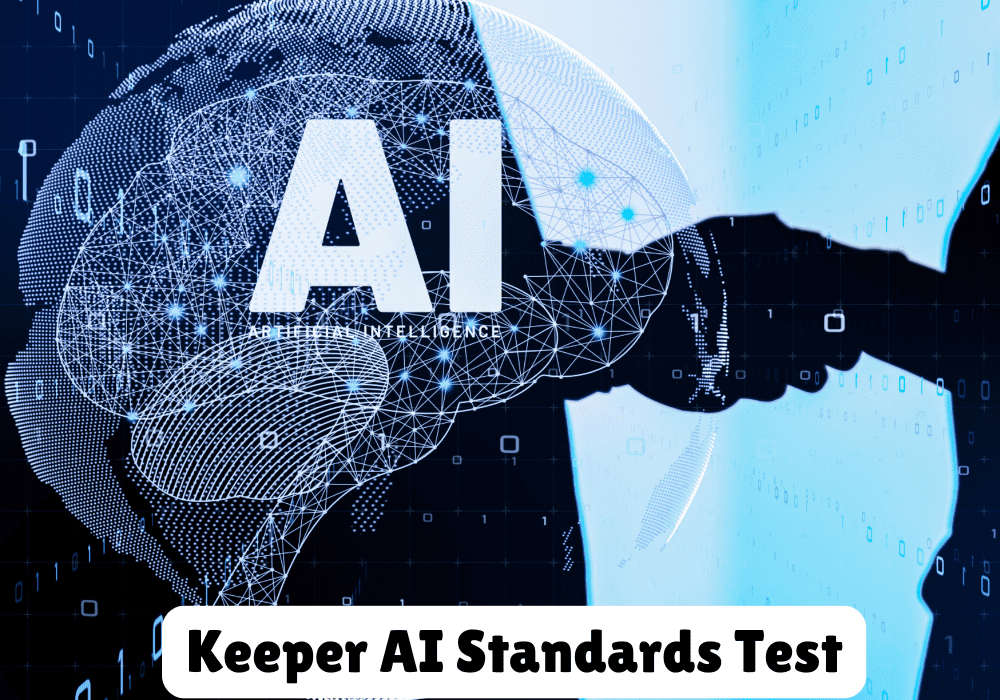
Artificial Intelligence (AI) has become an integral part of modern technology, influencing industries ranging from healthcare to finance. As AI systems become more prevalent, the need for standardized testing and evaluation becomes critical to ensure that these systems operate safely, ethically, and effectively. The Keeper AI Standards Test is a framework designed to evaluate AI systems against established benchmarks, ensuring that they meet the necessary criteria for deployment in various applications.
Introduction to Keeper AI Standards Test
The Keeper AI Standards Test is a rigorous evaluation process that AI systems undergo to ensure they meet specific standards in terms of performance, ethics, and security. This test is essential for organizations that rely on AI systems to make critical decisions, as it provides a standardized method of assessing the capabilities and limitations of these systems.
The Keeper AI Standards Test refers to a comprehensive suite of tests and evaluations designed to measure an AI system’s adherence to industry standards. This process involves a combination of technical assessments, ethical evaluations, and security checks to ensure that the AI system can perform its intended functions reliably and safely.
The Importance of Standardized AI Testing
Standardized testing is crucial in the AI industry for several reasons:
Ensuring Consistency and Reliability
One of the primary reasons for standardized testing is to ensure that AI systems perform consistently and reliably across different scenarios. The standards test keeper ai evaluates an AI system’s ability to handle various inputs and produce accurate and reliable outputs. This consistency is essential in critical applications such as healthcare, where the accuracy of AI-driven diagnoses can have life-or-death consequences.
Promoting Ethical AI Development
Ethics is a significant concern in AI development. The Keeper AI Standards Test includes a robust ethical evaluation component to ensure that AI systems do not perpetuate biases or cause harm to individuals or groups. This aspect of the test is particularly important in applications such as hiring algorithms or predictive policing, where biased outcomes can have severe social consequences.
Enhancing Security Measures
Security is another critical aspect of AI systems, particularly those used in sensitive areas like finance or national security. The Keeper AI Standards Test includes stringent security assessments to identify potential vulnerabilities in AI systems. By addressing these vulnerabilities, the test helps prevent malicious actors from exploiting AI systems to cause harm.
Facilitating Regulatory Compliance
As AI becomes more widespread, governments and regulatory bodies are introducing legislation to govern its use. The standards test keeper ai helps organizations ensure that their AI systems comply with these regulations, reducing the risk of legal repercussions and enhancing public trust in AI technologies.
Components of the Keeper AI Standards Test

The Keeper AI Standards Test is divided into several key components, each designed to assess a different aspect of an AI system’s performance. These components include:
Technical Performance Evaluation
The technical performance evaluation is the core of the standards test keeper ai. This component assesses the AI system’s ability to perform its intended functions accurately and efficiently. Key metrics evaluated in this section include:
- Accuracy: The ability of the AI system to produce correct outputs based on the given inputs.
- Robustness: The system’s resilience to changes in input data or environmental conditions.
- Efficiency: The system’s performance in terms of speed and resource utilization.
Ethical Evaluation
The ethical evaluation component of the Keeper AI Standards Test examines the AI system’s adherence to ethical principles. This evaluation focuses on:
- Bias Detection: Identifying and mitigating any biases in the AI system’s algorithms.
- Transparency: Ensuring that the AI system’s decision-making processes are understandable and explainable.
- Fairness: Assessing whether the AI system treats all users or subjects equitably, without discrimination.
Security Assessment
The security assessment component evaluates the AI system’s resilience to cyber threats. This assessment includes:
- Vulnerability Scanning: Identifying potential weaknesses in the AI system that could be exploited by malicious actors.
- Penetration Testing: Simulating cyber-attacks to test the AI system’s defenses.
- Data Protection: Ensuring that the AI system adequately protects sensitive data from unauthorized access.
Regulatory Compliance Check
The regulatory compliance check ensures that the AI system meets all relevant legal and regulatory requirements. This component of the test includes:
- Data Privacy Compliance: Ensuring that the AI system adheres to data protection regulations, such as GDPR or CCPA.
- Industry-Specific Regulations: Verifying that the AI system complies with regulations specific to its application, such as FDA requirements for medical AI systems.
- Ethical Standards Compliance: Ensuring that the AI system meets ethical guidelines set by industry bodies or regulatory authorities.
How the Keeper AI Standards Test Works

The Keeper AI Standards Test is a multi-step process that involves several stages of evaluation and feedback.
Initial Assessment
The initial assessment is the first step in the standards test keeper ai. During this stage, the AI system undergoes a preliminary evaluation to identify any obvious issues or areas of concern. This assessment helps determine the scope of the full test and highlights any specific areas that require additional scrutiny.
Comprehensive Evaluation
The comprehensive evaluation is the core of the keeper.ai standards test. This stage involves a detailed examination of the AI system’s technical performance, ethical considerations, security measures, and regulatory compliance. The system is subjected to a battery of tests and assessments designed to evaluate its capabilities across these areas.
Feedback and Remediation
Following the comprehensive evaluation, the results are compiled into a detailed report. This report provides feedback on the AI system’s performance, highlighting any areas where the system failed to meet the required standards. The organization responsible for the AI system can use this feedback to make necessary improvements and address any identified issues.
Re-evaluation
Once the necessary improvements have been made, the AI system undergoes a re-evaluation to ensure that it now meets the required standards. This stage is crucial to verify that the remediation efforts were successful and that the system is now compliant with the Keeper AI Standards Test.
Certification
If the AI system passes the re-evaluation, it is awarded a certification indicating that it has successfully met the standards test keeper ai. This certification serves as a mark of quality and reliability, demonstrating that the AI system has undergone rigorous testing and meets the highest industry standards.
The Role of Keeper AI Standards Test in AI Development
The Keeper AI Standards Test plays a critical role in the development and deployment of AI systems. By providing a standardized method of evaluation, the test helps organizations ensure that their AI systems are safe, ethical, and reliable. This, in turn, fosters greater trust in AI technologies and encourages their adoption across various industries.
Supporting Innovation
While the standards test keeper ai is designed to ensure that AI systems meet established standards, it also supports innovation by providing a clear framework for development. By understanding the criteria their keeper ai standard test must meet, developers can focus on creating innovative solutions that adhere to these standards, ultimately driving the advancement of AI technology.
Enhancing Public Trust
Public trust is essential for the widespread adoption of AI technologies. The keeper.ai standards test helps build this trust by ensuring that AI systems are evaluated against rigorous standards before they are deployed. By demonstrating that their AI systems have passed this test, organizations can reassure the public that their technologies are safe and reliable.
Facilitating Global AI Governance
As AI becomes more prevalent worldwide, there is a growing need for global governance frameworks to ensure its safe and ethical use. The standards test keeper ai contributes to this effort by providing a standardized method of evaluation that can be adopted by organizations and regulatory bodies across different countries. This promotes a consistent approach to AI governance, helping to prevent the emergence of disparate standards that could hinder international collaboration and innovation.
Challenges in Implementing the Keeper AI Standards Test
While the Keeper AI Standards Test provides a robust framework for evaluating AI systems, its implementation is not without challenges. Some of the key challenges include:
Complexity of AI Systems
keeper ai test standards are inherently complex, with many different components and algorithms working together to produce outputs. This complexity can make it challenging to evaluate AI systems comprehensively, particularly when it comes to assessing their ethical implications and potential biases. The keeper.ai standards test must continuously evolve to keep pace with advancements in AI technology and ensure that it can accurately evaluate these systems.
Rapid Evolution of AI Technologies
AI technology is advancing rapidly, with new algorithms and techniques being developed at a breakneck pace. This rapid evolution presents a challenge for the Keeper AI Standards Test, as it must continually update its evaluation criteria to reflect the latest developments in the field. Ensuring that the test remains relevant and up-to-date is essential to maintaining its effectiveness.
Balancing Innovation and Regulation
One of the primary goals of the standards test keeper ai is to ensure that AI systems are safe and ethical. However, there is a risk that overly stringent standards could stifle innovation by making it more difficult for developers to create new AI technologies. Striking the right balance between innovation and regulation is a key challenge for the Keeper AI Standards Test.
Global Adoption of Standards
For the Keeper AI Standards Test to be truly effective, it must be adopted by organizations and regulatory bodies around the world. Achieving global adoption is a significant challenge, as different countries may have varying priorities and regulatory frameworks when it comes to AI. Efforts to promote the test on a global scale must consider these differences and work to build consensus around a common set of standards.
Future of Keeper AI Standards Test
The future of the keeper.ai standards test is likely to be shaped by several key trends and developments in the AI industry. These include:
Increased Focus on Ethical AI
AI continue to grow, the Keeper AI Standards Test is expected to place an even greater emphasis on ethical considerations. This could include more detailed assessments of bias, fairness, and transparency, as well as the development of new tools and methodologies to evaluate these aspects of AI systems. The ethical component of the test will likely become more sophisticated, incorporating insights from fields such as sociology, psychology, and philosophy to ensure that AI systems are not only technically sound but also socially responsible.
Integration with AI Development Lifecycles
In the future, the Keeper AI Standards Test could become more deeply integrated into the AI development lifecycle. Rather than being a final step before deployment, the test might be applied at various stages of development, from the initial design phase to ongoing maintenance and updates. This would allow for continuous monitoring and improvement of AI systems, ensuring that they remain compliant with standards throughout their lifecycle. This proactive approach could help identify potential issues early in the development process, reducing the risk of deploying flawed or unsafe AI systems.
AI-Assisted Evaluation
As AI technology continues to advance, there is potential for AI itself to assist in the evaluation process. AI-driven tools could be developed to automate certain aspects of the keeper.ai standards test, such as vulnerability scanning or bias detection. These tools could analyze large volumes of data more quickly and accurately than human evaluators, improving the efficiency and effectiveness of the test. However, it will be essential to ensure that these AI-driven evaluation tools are themselves subject to rigorous testing and standards.
Adoption of International Standards
To facilitate global adoption, the standards test keeper ai may evolve to align with international standards and frameworks for AI governance. Collaborating with international organizations such as the IEEE, ISO, and the European Union could help establish the test as a globally recognized standard for AI evaluation. This would encourage broader adoption and ensure that AI systems developed in different regions of the world are held to the same high standards.
Customization for Industry-Specific Needs
While the Keeper AI Standards Test provides a general framework for evaluating AI systems, different industries may have specific requirements that need to be addressed. In the future, industry-specific versions of the test could be developed to cater to the unique needs of sectors such as healthcare, finance, and autonomous vehicles. These customized tests would include additional criteria and benchmarks relevant to the specific applications of AI within each industry, ensuring that the systems meet the highest standards for safety, ethics, and performance.
Conclusion
The Keeper AI Standards Test represents a significant advancement in the evaluation of AI systems, providing a comprehensive framework for assessing technical performance, ethical considerations, security, and regulatory compliance. As AI technology continues to evolve, the importance of standardized testing will only increase, making the Keeper AI Standards Test an essential tool for organizations seeking to deploy AI systems responsibly.
By ensuring that AI systems meet rigorous standards, the keeper.ai standards test helps to build public trust in AI technologies, supports innovation, and promotes the ethical development of AI. While there are challenges to implementing and maintaining these standards, the benefits far outweigh the difficulties, paving the way for a future where AI systems are safe, reliable, and aligned with human values.
As the AI industry grows and new challenges emerge, the Keeper AI Standards Test will need to adapt and evolve to remain relevant. However, its core mission—to ensure that AI systems meet the highest standards of performance, ethics, and security—will remain unchanged. For organizations, developers, and regulators, the standards test keeper ai is a crucial step in the journey towards responsible AI deployment.
FAQs
1. What is the Keeper AI Standards Test?
The Keeper AI Standards Test is a comprehensive evaluation framework designed to assess AI systems across several key areas, including technical performance, ethical considerations, security, and regulatory compliance. The test ensures that AI systems meet established industry standards before they are deployed in real-world applications.
2. Why is standardized testing important for keeper ai standard test?
Standardized testing is crucial for keeper ai test standards because it ensures consistency, reliability, and ethical behavior across different applications. By subjecting AI systems to a rigorous evaluation process like the keeper.ai standards test, organizations can identify and address potential issues, ensuring that their AI technologies are safe, effective, and trustworthy.
3. How does the Keeper AI Standards Test address ethical concerns?
The keeper.ai standards test includes a dedicated ethical evaluation component that assesses AI systems for bias, fairness, transparency, and overall ethical behavior. This evaluation helps ensure that AI systems do not perpetuate harmful biases or discriminatory practices and that their decision-making processes are transparent and explainable.
4. Can AI systems assist in the Keeper AI Standards Test?
Yes, there is potential for AI-driven tools to assist in certain aspects of the Keeper AI Standards Test, such as vulnerability scanning or bias detection. These tools can analyze data more efficiently and accurately than human evaluators, improving the overall effectiveness of the test. However, these AI-driven tools must also undergo rigorous evaluation to ensure their reliability.
5. How will the keeper.ai standards test evolve in the future?
The Keeper AI Standards Test is likely to evolve in several ways, including a greater focus on ethical considerations, deeper integration into the AI development lifecycle, the adoption of international standards, and the development of industry-specific versions of the test. These changes will help ensure that the test remains relevant and effective in the face of rapidly advancing AI technology.
Tech
Is www gravityinternetnet the Best ISP for You? A 2025 Review

With everything from work to entertainment moving online, a strong internet connection has become an everyday essential.
Whether you’re working from home, streaming your favorite shows, or gaming online, the quality of your internet service can significantly impact your experience. Enter www gravityinternetnet, a rising star in the ISP world that promises to redefine how we connect online.
But with numerous ISPs available, what sets www gravityinternetnet apart? Let’s delve into its offerings and see if it lives up to the hype.
What Is www gravityinternetnet?
“www.gravityinternetnet is a modern internet provider redefining connectivity by using state-of-the-art technology to deliver fast, stable, and cost-effective internet access.” Unlike traditional ISPs that rely solely on wired connections, Gravity InternetNet combines fiber-optic, 5G, and satellite technologies to ensure seamless connectivity across urban and rural areas.
Key Features:
- High-Speed Internet: Offers speeds up to 1 Gbps, ideal for streaming, gaming, and large file downloads.
- Affordable Pricing: Transparent pricing with no hidden fees, catering to various budgets.
- Wide Coverage: Utilizes a mix of fiber-optic and satellite technologies to reach underserved areas.
- Always-on Support: Get help any time of day with responsive, around-the-clock customer service designed to resolve issues quickly.
Why Choose www gravityinternetnet?
1. Unmatched Speed and Reliability
With internet speeds reaching up to 1 Gbps, www gravityinternetnet ensures smooth streaming, lag-free gaming, and quick downloads. Their hybrid approach, combining fiber-optic and satellite technologies, guarantees consistent performance even in remote locations.
2. Transparent and Affordable Pricing
Say goodbye to hidden fees and unexpected charges. “With straightforward and budget-friendly plans, www.gravityinternetnet makes it easy to know exactly what you’re paying for, no hidden fees, just solid value.”
3. Comprehensive Coverage
Whether you’re in a bustling city or a remote village, www gravityinternetnet’s use of satellite and fiber-optic technologies ensures you stay connected. This extensive coverage makes it an excellent choice for users in underserved areas.
4. Robust Security Measures
In an era of increasing cyber threats, www gravityinternetnet prioritizes user security. The platform employs advanced encryption protocols and data protection measures to safeguard users’ personal and financial information.
5. Exceptional Customer Support
www.gravityinternetnet puts user satisfaction first, shaping its services around the needs and expectations of its customers. Their 24/7 support team is readily available to assist with any technical or billing issues, ensuring a hassle-free experience for users.

How Does www gravityinternetnet Compare to Other ISPs?
| Feature | www gravityinternetnet | Competitor A | Competitor B |
| Max Speed | 1 Gbps | 500 Mbps | 300 Mbps |
| Pricing Transparency | Yes | No | Yes |
| Rural Coverage | Extensive | Limited | Moderate |
| 24/7 Support | Yes | No | Yes |
| Security Features | Advanced Encryption | Basic | Moderate |
Note: Competitor data is illustrative.
Real User Experiences
A growing number of users have praised www.gravityinternetnet for its reliable service and user-friendly experience.
“Switching to it was the best decision. The speed is incredible, and I haven’t experienced any downtime.” – Sarah L., California
“As a remote worker, reliable internet is crucial. www gravityinternetnet has exceeded my expectations.” – James T., Texas
Conclusion
In the competitive world of internet service providers, it stands out by offering high-speed, reliable, and affordable internet solutions. With its innovative use of technology, transparent pricing, and exceptional customer support, it’s a compelling choice for users seeking a superior internet experience.
FAQs:
- What areas does www gravityinternetnet serve?
- www gravityinternetnet provides coverage across various regions, including both urban and rural areas. For specific service availability, visit their coverage page.
- Are there any data caps with www gravityinternetnet?
- No, www gravityinternetnet offers plans without data caps, ensuring unlimited browsing and streaming.
- How can I contact customer support?
- For assistance anytime, simply contact their support team via email.
- Is there a contract required?
- www gravityinternetnet offers both contract and no-contract plans, providing flexibility based on your preferences.
- What devices are compatible with their service?
- Their service is compatible with a wide range of devices, including smartphones, laptops, smart TVs, and more.
Also Read: Worty34: Everything You Need to Know About
Tech
ADE8606: A Guide to Integrated Circuit
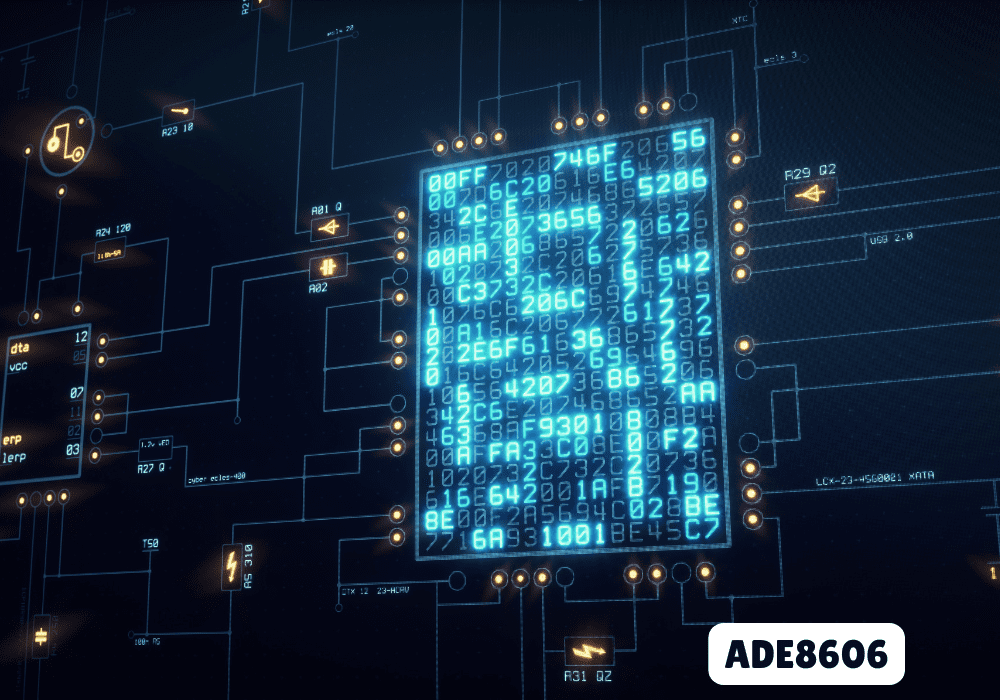
In the world of electronics and integrated circuits (ICs), the ADE8606 stands out as a highly specialized component designed for specific use cases. Whether you’re an electrical engineer, a student, or a tech enthusiast, understanding the ADE8606 can be crucial for projects requiring precision in data conversion, energy measurement, or signal processing.
This guide will take an in-depth look at what the ADE8606 is, how it functions, its applications, and why it is important in modern electronic designs. We will also cover frequently asked questions to address any lingering doubts or queries about this powerful integrated circuit.
Introduction to the ADE8606
The ADE8606 is an energy measurement integrated circuit produced by Analog Devices. This IC is designed for precise measurement and processing of electrical parameters, making it an ideal choice for applications that require high accuracy in energy monitoring. With its ability to perform various signal processing tasks, including analog-to-digital conversion, the ADE8606 is often used in smart meters and industrial applications.
What Makes the ADE8606 Stand Out?
The ADE8606 stands out due to its integrated architecture, which combines multiple functions into a single chip. It is specifically designed to handle voltage, current, and power measurements with a high level of precision, which is critical for systems that require real-time energy monitoring and billing.
How Does the ADE8606 Work?
The ADE8606 works by converting analog signals, such as voltage and current, into digital signals. These digital signals are then processed to provide accurate measurements of electrical parameters. This IC uses a variety of filters, amplifiers, and analog-to-digital converters (ADCs) to ensure that the data is both accurate and stable.
Signal Processing Capabilities
The ADE8606 processes the incoming signals through its internal digital filters to remove noise and improve signal accuracy. It also has built-in calibration routines, allowing for error correction in real-time.
Key Features of the ADE8606
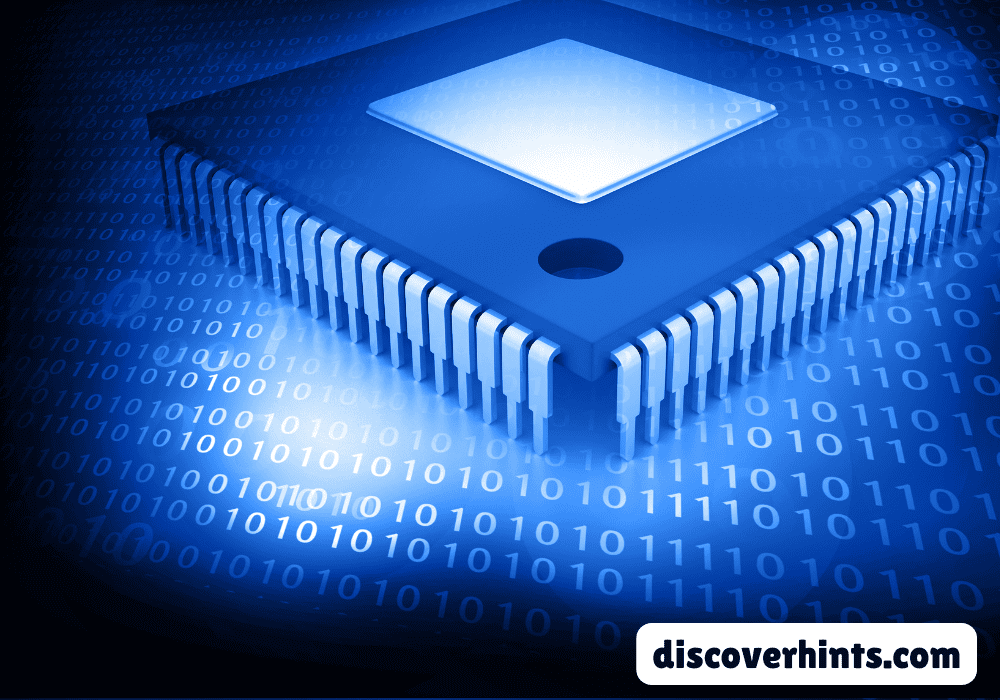
The ADE8606 offers a range of features that make it highly suitable for energy measurement and data acquisition systems.
- High-Resolution Analog-to-Digital Conversion (ADC): The IC offers a high-resolution ADC, ensuring accurate data conversion from analog to digital signals.
- Wide Dynamic Range: The ADE8606 can measure a broad range of input signals, from low to high levels, without losing accuracy.
- Low Power Consumption: Despite its advanced features, the ADE8606 is designed to be power efficient, which is crucial for applications that operate continuously.
- Calibration Support: The IC provides on-chip calibration, which improves the accuracy of measurements over time.
- Robust Signal Filtering: The ADE8606 includes robust digital filters that eliminate noise and interference from the input signals.
Applications of the ADE8606
The ADE8606 finds use in various applications where precise energy measurement and data processing are necessary.
- Smart Meters: The ADE8606 is widely used in smart meters to measure electricity consumption accurately and in real-time.
- Industrial Energy Monitoring Systems: Factories and large industrial setups often rely on the ADE8606 for tracking energy usage and improving energy efficiency.
- Renewable Energy Systems: Solar and wind power systems use the ADE8606 to monitor energy production and ensure optimal performance.
- Data Acquisition Systems: In systems that collect and process large amounts of data from sensors, the ADE8606 provides accurate conversion of sensor data into usable information.
Understanding the Functional Block Diagram of the ADE8606
The functional block diagram of the ADE8606 helps in understanding how this IC operates. It typically includes the following main components:
- Analog Front-End (AFE): The AFE conditions the input signals (voltage and current) and prepares them for digital conversion.
- Analog-to-Digital Converters (ADCs): These converters transform the analog signals into digital data that can be processed by the system.
- Digital Signal Processor (DSP): The DSP processes the digital signals to extract accurate measurements and apply filters.
- Calibration and Error Correction Unit: This unit automatically adjusts the measurements to correct any drift or errors.
Understanding the block diagram is critical for engineers when designing circuits that include the ADE8606, as it outlines the IC’s internal functionality and signal flow.
How to Use the ADE8606 in Circuit Design
Designing a circuit that incorporates the ADE8606 requires attention to detail to ensure accurate performance. Here are the steps to successfully implement the ADE8606 in your circuit design:
- Step 1: Define Your Application Needs: Begin by identifying the electrical parameters you need to measure, such as voltage, current, and power.
- Step 2: Set Up Power Supply: Ensure that the power supply to the ADE8606 is stable and within the recommended voltage range.
- Step 3: Configure Input Signal Conditioning: Use appropriate resistors and capacitors to condition the input signals before feeding them into the ADE8606.
- Step 4: Implement Proper Grounding: Grounding is critical to reduce noise and interference in the measurement signals.
- Step 5: Program Calibration: Use the ADE8606’s on-chip calibration features to fine-tune the accuracy of your measurements.
Comparison Between ADE8606 and Other Similar ICs
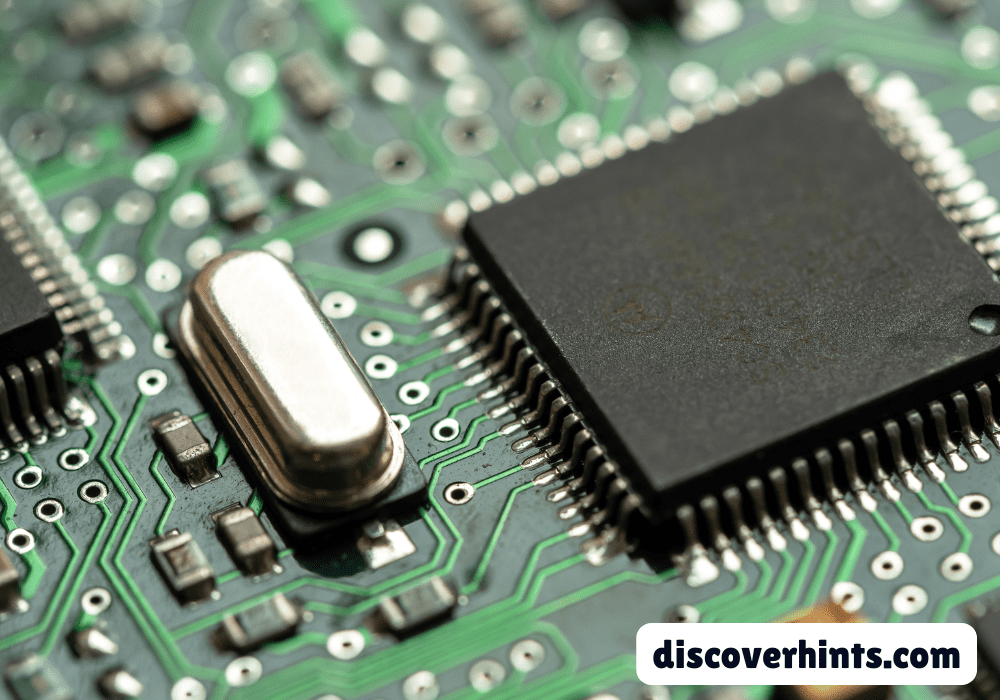
When comparing the ADE8606 to other ICs used for energy measurement, such as the ADE7758 and the MCP3909, it’s essential to consider the following factors:
- Accuracy: The ADE8606 offers higher precision due to its advanced calibration and filtering features.
- Power Consumption: The ADE8606 is more energy-efficient, making it ideal for long-term applications like smart meters.
- Dynamic Range: While some ICs might perform well at specific ranges, the ADE8606 has a broader dynamic range, making it more versatile.
- Ease of Use: The ADE8606 is designed for ease of implementation, with built-in features that reduce the complexity of circuit design.
Why Choose the ADE8606 for Energy Measurement?
The ADE8606 is specifically engineered for energy measurement, offering exceptional accuracy and reliability. Here’s why it stands out for such applications:
- High Precision: Its high-resolution ADCs and filtering techniques ensure that energy measurements are highly accurate, which is critical for billing purposes.
- Low Power Operation: For devices that need to operate 24/7, such as smart meters, low power consumption is a major benefit.
- Real-Time Data Processing: The ADE8606 processes energy data in real-time, making it ideal for applications that require immediate feedback.
The Role of ADE8606 in Data Conversion
The ADE8606 plays a vital role in converting analog signals from electrical systems into digital data. Its high-resolution ADCs allow for precise measurement, and its digital filters remove noise to ensure the accuracy of the converted data.
This conversion capability is essential in modern electronics, where real-time data monitoring and energy efficiency are priorities.
Power Efficiency of the ADE8606
One of the standout features of the ADE8606 is its power efficiency. Designed to consume minimal power while still delivering high performance, it is ideal for use in systems that need to run continuously without frequent maintenance or battery changes.
Common Challenges When Using the ADE8606
While the ADE8606 is a powerful IC, users may encounter several challenges, including:
- Signal Noise: In environments with high levels of electromagnetic interference, signal noise can affect the accuracy of the measurements.
- Calibration Complexity: Setting up the calibration routines correctly can be time-consuming for those unfamiliar with the process.
- Power Supply Stability: An unstable power supply can lead to inaccurate measurements or malfunction of the IC.
Best Practices for Implementing ADE8606 in Projects
To get the best results from the ADE8606, follow these best practices:
- Proper Grounding: Always ensure that your circuit is grounded correctly to minimize noise.
- Stable Power Supply: Use a regulated power supply to prevent voltage fluctuations.
- Shielding: In high-noise environments, consider shielding your circuit to protect against electromagnetic interference.
How to Source the ADE8606
Finding a reliable source for the ADE8606 can be challenging due to its specialized nature. Some of the most reliable places to purchase this IC include:
- Authorized Distributors: Companies like Digi-Key and Mouser Electronics offer genuine ADE8606 ICs.
- Direct from Manufacturer: Purchasing directly from Analog Devices ensures that you receive the most up-to-date version of the IC.
Future Trends and Developments in ICs like the ADE8606
As technology continues to evolve, ICs like the ADE8606 will become even more advanced. Future trends include:
- Increased Integration: More functionality will be built into a single IC, reducing the need for multiple components.
- Lower Power Consumption: Expect even lower power requirements as efficiency becomes a growing concern.
- Enhanced Accuracy: Advances in ADC technology will lead to even more precise measurements.
Frequently Asked Questions (FAQs) About the ADE8606
1. What is the ADE8606 used for?
The ADE8606 is primarily used for accurate energy measurement in applications like smart meters, industrial energy monitors, and renewable energy systems.
2. How accurate is the ADE8606?
The ADE8606 is highly accurate due to its high-resolution ADCs and built-in calibration routines. It can measure electrical parameters with precision even in noisy environments.
3. Can the ADE8606 be used in renewable energy systems?
Yes, the ADE8606 is commonly used in renewable energy systems to monitor energy production and ensure that power is being efficiently managed.
4. How do I calibrate the ADE8606?
The ADE8606 has on-chip calibration features, which can be programmed to adjust the IC for accurate measurements over time.
5. Where can I buy the ADE8606?
The ADE8606 can be purchased from authorized distributors like Digi-Key, Mouser Electronics, and directly from Analog Devices.
Conclusion
The ADE8606 is a highly specialized integrated circuit designed for precise energy measurement and signal processing. With its advanced features, it is the go-to solution for smart meters, industrial applications, and renewable energy systems. By understanding its capabilities, applications, and best practices, you can make the most of this powerful IC in your projects.
Tech
Understanding 11.11.11.21:5000 – Networking and Port Management

In the world of computer networking, IP addresses and port numbers play a critical role in facilitating communication between devices. One specific combination that has sparked curiosity and importance in recent times is 11.11.11.21:5000. While this may seem like a random sequence of numbers, it actually represents a crucial part of network management and system configuration. In this detailed guide, we will dive into the significance of 11.11.11.21:5000, explain its meaning, use cases, and how it fits into the broader context of networking, including its role in server management, firewalls, and troubleshooting.
What is 11.11.11.21:5000?
The string 11.11.11.21:5000 consists of two main components: an IP address (11.11.11.21) and a port number (:5000). In networking terms, an IP address uniquely identifies a device on a network, while the port number serves as a virtual point where network communications start and end. When combined, 11.11.11.21:5000 refers to a specific communication endpoint on a server or system.
This endpoint can be used for a variety of purposes, such as hosting a web application, communicating with APIs, or accessing databases. While the IP address specifies the location of the device, the port number determines which application or service on that device is being accessed.
Understanding IP Address 11.11.11.21
Private vs. Public IP Addresses
In networking, there are two types of IP addresses: public and private. Public IP addresses are used on the open internet, allowing communication between devices across the globe. Private IP addresses, on the other hand, are used within local networks and cannot be accessed from outside without proper routing and port forwarding.
Is 11.11.11.21 a Private or Public IP?
The IP address 11.11.11.21 falls under the public IP address range. However, it is not a commonly used public IP for consumer-facing services. Instead, it may be used in controlled environments like corporate networks, testing servers, or internal systems that require a specific configuration.
What Does :5000 Represent?
Port Numbers and Their Role in Networking
Port numbers are essential to differentiate between various services running on the same IP address. Every service or application that needs to communicate over a network is assigned a port number. Port numbers range from 0 to 65535, with specific ranges reserved for common services (e.g., port 80 for HTTP and port 443 for HTTPS).
Common Uses of Port 5000
Port 5000 is often associated with certain development environments, especially in web development. In many cases, developers use port 5000 to test applications locally before deploying them to production servers. This port is also used by certain database systems and web frameworks like Flask (a Python web framework) for testing purposes.
How 11.11.11.21:5000 is Used in Web Development
Localhost and Port Forwarding
In web development, developers frequently work with local servers on their machines using IP addresses like 127.0.0.1 (localhost). However, when developing in a networked environment, they might use 11.11.11.21:5000 for testing or accessing applications from other devices within the same network. Port forwarding may be used to route external traffic to a specific port, allowing access to services running locally.
Testing Web Applications
Developers commonly utilize port 5000 during the testing phase of web applications. For instance, frameworks like Flask and Django bind to port 5000 when running in development mode, enabling developers to access the application through the browser using 11.11.11.21:5000.
Server Management and 11.11.11.21:5000
Setting Up Servers with IP
In server management, configuring an IP address with a port number is standard practice. For example, a web server might run on 11.11.11.21:5000, meaning that the server can be accessed via this specific endpoint. This configuration is essential for organizing traffic and managing multiple services on the same machine.
Monitoring Traffic on Port 5000
Administrators can monitor traffic flowing through port 5000 using various network monitoring tools. By doing so, they can ensure that the service running on that port is healthy, track performance, and identify any potential security risks.
Security Considerations for 11.11.11.21:5000
Firewall Configuration
One of the key security measures for managing 11.11.11.21:5000 is properly configuring firewalls. Firewalls can be set up to allow or deny traffic to this specific port based on the organization’s security policies. Misconfigurations, however, can lead to vulnerabilities and expose sensitive services to unauthorized access.
Potential Vulnerabilities and Mitigations
Ports are frequent targets of attackers looking for open points to exploit. Port 5000, being commonly used in development, may be exposed if not properly secured. Employing strategies like whitelisting IP addresses, using strong authentication mechanisms, and enabling encryption can mitigate these risks.
Networking Tools to Troubleshoot 11.11.11.21:5000
Ping, Traceroute, and Port Scanning
When troubleshooting connectivity issues with 11.11.11.21:5000, network administrators often use tools like Ping to check the availability of the IP address, Traceroute to map the path between the local machine and the destination, and Port Scanning to verify whether port 5000 is open and accepting connections.
8. How to Access 11.11.11.21:5000
Remote Access Techniques
To remotely access 11.11.11.21:5000, one must configure the network appropriately. This often involves setting up secure tunnels (like SSH) or VPNs to connect to the network hosting the server. Proper authentication is also critical to prevent unauthorized access.
Configuring Browser and Software
For web-based applications, accessing 11.11.11.21:5000 typically involves entering the IP address and port into a web browser. For API services or database connections, custom software or scripts may need to be configured to direct traffic to this specific IP
Use Cases for 11.11.11.21:5000 in Real-World Scenarios
Web Servers
In some web hosting scenarios, 11.11.11.21:5000 might be assigned to a specific service or sub-application. For example, the main site might run on port 80, while a secondary service (like an API) operates on port 5000.
API Communication
API developers may use 11.11.11.21:5000 to test or run backend services that interface with front-end applications. This ensures that different microservices within the same network can communicate effectively without port conflicts.
Database Access
Some database management systems use port 5000 to allow connections from client applications. 11.11.11.21:5000 could represent a database endpoint where users query data, manage tables, or perform administrative tasks.
Best Practices for Managing Ports Like 5000
Ensuring Optimal Network Performance
When managing ports like 5000, it’s essential to periodically review network performance and ensure that traffic is flowing smoothly. Load balancing, traffic segmentation, and proper bandwidth allocation are key considerations for network administrators.
Avoiding Common Mistakes
A common mistake is leaving unnecessary ports open or misconfiguring firewalls, leaving services exposed to potential attacks. Regular audits of open ports and security configurations are necessary to prevent such issues.
Common Issues Encountered with 11.11.11.21:5000
Connection Refused Errors
One of the most common errors encountered with 11.11.11.21:5000 is a “Connection Refused” message. This may happen if the service running on port 5000 is down, misconfigured, or blocked by a firewall.
Misconfiguration Problems
Misconfiguring IP addresses or ports can lead to downtime and connectivity issues. It’s crucial to verify network settings, ensure that services are bound to the correct IP
combination, and troubleshoot using network tools when issues arise.
How to Secure 11.11.11.21:5000 in a Production Environment
Enabling Encryption
When using 11.11.11.21:5000 for sensitive services, it’s critical to encrypt the data being transmitted. SSL/TLS certificates can be installed to secure communication between clients and servers, ensuring that data is not intercepted during transmission.
Using Strong Authentication Methods
To prevent unauthorized access to 11.11.11.21:5000, implementing strong authentication mechanisms is essential. This includes using complex passwords, enabling two-factor authentication (2FA), and employing role-based access control (RBAC).
Case Study: Real-Life Application of 11.11.11.21:5000
In a real-world scenario, 11.11.11.21:5000 might be used for a web application that handles internal employee data. A company could deploy a Flask-based dashboard on port 5000, allowing employees to log in, view performance data, and access reports. The security team would configure firewalls to restrict access to authorized IP addresses and secure the endpoint with SSL encryption.
Difference Between 11.11.11.21:5000 and Other IP Configurations
Comparing Different Port Numbers
While port 5000 is often used for development purposes, other ports serve different functions. For instance, port 80 is used for HTTP traffic, and port 22 is used for SSH. Each port has its own set of protocols and best practices depending on its application.
Advantages and Disadvantages
Using 11.11.11.21:5000 for development environments offers flexibility and ease of use, but it may require additional security measures in production to prevent unauthorized access and potential breaches.
Future Trends in Networking and the Role of Port Management
As network infrastructures evolve, the role of IP
configurations like 11.11.11.21:5000 will continue to be crucial. With the rise of containerization and microservices, managing individual service endpoints using unique ports will become even more critical. New tools and techniques for better securing and monitoring ports will emerge as the need for more efficient, scalable networking solutions grows.
Frequently Asked Questions (FAQs)
1. What is the significance of 11.11.11.21:5000?
11.11.11.21:5000 represents a specific endpoint in networking, where the IP address (11.11.11.21) designates the device, and the port number (5000) identifies the service or application being accessed.
2. How do I access 11.11.11.21:5000 from my browser?
To access 11.11.11.21:5000, you would type “http://11.11.11.21:5000” into your web browser. Ensure the server is running and accepting connections on port 5000.
3. Is 11.11.11.21:5000 secure for web applications?
While 11.11.11.21:5000 can be used in web applications, it’s essential to implement security measures like encryption (SSL/TLS) and proper firewall configurations to protect the endpoint.
4. Can I change the port number from 5000 to something else?
Yes, the port number can be changed if necessary. However, the service must be configured to listen on the new port, and the firewall settings need to be updated accordingly.
5. Why might I encounter “Connection Refused” on 11.11.11.21:5000?
This error typically occurs when the service running on port 5000 is down or misconfigured, or if the firewall is blocking the connection.
-

 Blog9 months ago
Blog9 months agoOkiha18 Convenience Store Things: A Comprehensive Guide
-

 Automotive8 months ago
Automotive8 months agoGorilla Kustoms: Pioneering Vehicle Personalization in Gosford, New South Wales
-

 Real Estate7 months ago
Real Estate7 months agoWhat Are the Benefits of Regular Pressure Washing for Seattle Commercial Properties?
-
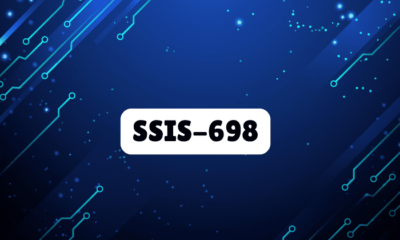
 Tech10 months ago
Tech10 months agoSSIS-698: Why This Unique Code Is Important
-
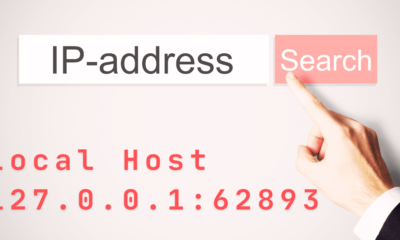
 Tech11 months ago
Tech11 months ago127.0.0.1:62893: Common Uses and Best Practices
-

 Lifestyle11 months ago
Lifestyle11 months agoHow Old is Lil Meech? Age, Height, Family & More
-

 Biography11 months ago
Biography11 months agoAll About Kristy Greenberg Wikipedia : Biography and More
-

 Lifestyle11 months ago
Lifestyle11 months agoSoymamicoco and Its Remarkable Benefits – Ultimate Guide


